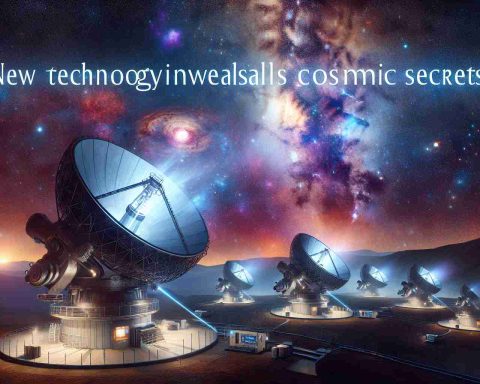Stargazers, Get Ready! A Cosmic Phenomenon Awaits You.
Amateur astronomers have a special treat—the chance to observe 3C 273, a visual marvel shining with the luminosity of trillions of suns. This quasar, the most distant visible through standard telescopes, is located an astounding 2.5 billion light-years away and is the radiant center of an active galaxy fueled by a voracious supermassive black hole.
In the early 1960s, 3C 273 baffled scientists when powerful radio emissions sparked curiosity. Initially mistaken for a star, its light exhibited unique characteristics, revealing that it was much farther than previously thought. This discovery by astronomer Maarten Schmidt led to the identification of quasars—objects renowned for their extraordinary brightness and energy.
Research using the Hubble Space Telescope has unveiled intricate structures surrounding 3C 273. Imaging has captured filaments, lobes, and an unusual L-shaped feature, possibly remnants of smaller galaxies merging with the consuming black hole, which boasts a mass nearly 900 million times that of our sun.
Quasars like 3C 273 are vital to our understanding of cosmic evolution, representing a significant aspect of active galactic nuclei. With countless quasars scattered across the universe, the rich tapestry of these celestial objects continues to challenge and expand our knowledge of the cosmos.
Unlock the Secrets of the Universe: Discover the Wonders of Quasar 3C 273
For amateur astronomers and enthusiasts, the opportunity to observe quasar 3C 273 is not just a visual treat but a profound journey into the universe’s past. This quasar stands out as the most distant object visible with ordinary telescopes, offering a glimpse into a time when the universe was different, and the laws of cosmic formation were taking shape.
What is 3C 273?
3C 273 is a quasar, a type of celestial object that emits enormous amounts of energy, often outshining entire galaxies. Located about 2.5 billion light-years away from Earth in the constellation Virgo, this extraordinary object has a luminosity equivalent to trillions of suns, feeding astral curiosity and research into cosmic phenomena.
How to Observe 3C 273
1. Choose the Right Time: 3C 273 is best observed when it is high in the sky, typically during the spring months. Check local astronomical calendars for peak visibility times.
2. Use Quality Equipment: A telescope with a minimum aperture of 4 inches (100mm) is recommended to resolve the quasar’s faint light.
3. Find a Dark Location: Light pollution can hinder visibility. Choose a dark site away from city lights for optimal observation.
4. Use Star Maps: Familiarize yourself with star alignment. Mobile stargazing apps can help locate 3C 273 in the Virgo constellation.
Interesting Features of 3C 273
– Supermassive Black Hole: At its center lies a black hole with a mass about 900 million times that of the sun, continually drawing in matter and creating jets that emit powerful radiation.
– Impressive Structures: Images obtained from the Hubble Space Telescope indicate complex structures around 3C 273, including filaments and lobes, suggestive of galaxy mergers.
Pros and Cons of Observing Quasars
Pros:
– Deep Cosmic Insight: Observing quasars provides valuable information about the early universe and the formation of galaxies.
– Unique Viewing Experience: The sight of a bright quasar like 3C 273 offers a distinct and rare observing opportunity.
Cons:
– Equipment Limitation: Only larger telescopes can provide a worthy view of such distant objects.
– Weather Dependence: Observations can be hindered by cloud cover or poor atmospheric conditions.
The Importance of Quasars
Quasars, such as 3C 273, are crucial in astrophysics as they help astronomers understand the nature of black holes, galaxy formation, and the evolution of the cosmos over billions of years. Their bright emissions act like beacons, guiding researchers through the complexities of cosmic evolution.
Current Trends in Quasar Research
– Technological Advances: Modern telescopes, paired with advanced imaging techniques, allow for deeper exploration and observation of quasars.
– International Collaborations: Research involving quasars is becoming more global, with scientists from various countries working together to compile observations and data.
Conclusion
As you prepare your telescope and gear for observing 3C 273, remember that you are not just witnessing a point of light but engaging with the history of the universe itself. Quasars like this hold the keys to understanding cosmic phenomena that have unfolded over billions of years. For more on celestial wonders and astronomical phenomena, check out NASA.

















